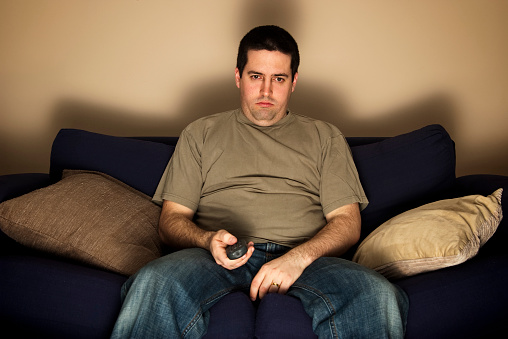 Good blood circulation is essential to maintain a healthy body. Your circulatory system is responsible for delivering oxygen and nutrients to your cells and is used to filter out waste and carbon dioxide from your body. Without this system working properly, you can develop a wide range of health problems, many of which can be fatal over time. Low blood circulation can also slowly do damage to major tissues and organs which can lead to additional health problems which can also be dangerous. There are many ways to prevent and correct poor blood circulation to help you avoid these unnecessary health risks.
Good blood circulation is essential to maintain a healthy body. Your circulatory system is responsible for delivering oxygen and nutrients to your cells and is used to filter out waste and carbon dioxide from your body. Without this system working properly, you can develop a wide range of health problems, many of which can be fatal over time. Low blood circulation can also slowly do damage to major tissues and organs which can lead to additional health problems which can also be dangerous. There are many ways to prevent and correct poor blood circulation to help you avoid these unnecessary health risks.
Causes of Low Blood Circulation
Poor blood circulation may be caused by several underlying conditions, of which the most common one is atherosclerosis. Other potential causes should also be taken into consideration when you are suffering from low blood circulation.
1. Atherosclerosis
Atherosclerosis is the hardening of the blood vessels, which makes it difficult to pump blood throughout the body, most notably in the hands and legs. This is caused by plaque deposits forming along the artery walls due to high blood pressure, high cholesterol or diabetes. Conditions like smoking or aging can also cause the blood vessels to harden.
In addition to causing atherosclerosis, diabetes or high cholesterol also contribute to the level of plaque formed and deposited in your body. This plaque sticks to the walls of your arteries which narrows the area in which blood can move through. The harder it is to pump blood throughout your body, the lower your blood circulation levels will be. This condition can be increased by poor eating habits that both contribute to the severity of these conditions and deprive your body of the necessary nutrients to keep up your circulatory system.
In some cases, foreign particles can also get trapped in the tissues and sells, which are then deposited into the bloodstream when the cells deposit them as waste. If these tissues become lodged on the walls of your veins and arteries, they can cause atherosclerosis which will lead to poor blood circulation.
2. Venous thrombosis
Some people with poor circulation may be suffering from venous thrombosis or deep vein thrombosis. These conditions are caused by veins becoming inflamed, often as a result of blood clots becoming lodged in the veins. This can lead to tenderness, skin discoloration and swelling in the area where the vein is being affected. Some people also report fluids becoming collected in nearby cells which contributes to the discomfort of the patient. Patients suffering from these symptoms not only have to worry about their circulation becoming damaged, but also the blood clot breaking loose and causing further damage throughout the body.
3. Inadequate exercise
Not exercising frequently can also lead to poor blood circulation. When you spend a great deal of time in a neutral position blood in the pelvis and legs can become stagnant which can lead to poor circulation and blood pooling. Combining a lack of exercise with poor diet and smoking can also increase your risk of developing a dangerous condition.
4. Tight fitting clothing
In some cases, tight fitting clothing can decrease blood circulation, most notably in the pelvic region. Control-top pantyhose, tight shirts or skinny jeans are just a few examples of clothing that can contribute to this issue.
5. Stress
Stress can also lead to poor circulation, most notably in the hands. Stress leads to knots in the muscles in the shoulders and neck which can restrict blood flow to the heart and other major organs.
Symptoms of Low Blood Circulation
There are a few signs you should watch out for if you think you are developing poor blood circulation. If you do not exercise often or you suffer from one of the conditions listed above, watch for pain in the legs when walking or performing other physical activity. This is known as intermittent claudication and is a sign that your legs are not getting the blood flow that they need.
You may also feel a numbness or weakness in your arms or legs. This can occur when you are active or when you are in a resting position. In severe cases this can be accompanied by slackened facial muscles which can lead to your face drooping or slurred speech. Take these side effects seriously, as this is a sign that there is not enough blood flow to your brain which could lead to a stroke. If these symptoms are combined with chest pain, you may be at risk for a heart attack.
Hands and feet may become cold or swell when they are not getting enough blood flow. This may be accompanied by a weak pulse in the legs or changes in skin color. If your skin appears to have a bluish hue, this is a sign that your cells are not getting enough oxygen due to poor blood flow. In men, if your lower body is not getting quality circulation, erectile dysfunction may happen.
How to Improve Poor Blood Circulation
After knowing the exact causes of circulatory system problems, natural therapies, conventional medication and lifestyle changes can be used to relieve the symptoms or remove this condition totally. You can treat conditions of bad blood circulation by doing aerobic exercises, eating healthy diets and taking some medicine prescribed by your doctor to relief the pain and swelling.
Exercise. The best thing you can do to help improve poor blood circulation is to exercise more frequently and lose weight. If your circulation is quite poor, you may need to start with moderate exercise and work your way up to more vigorous routines to avoid injury. Cardio based workout routines are essential for this because this increases lymphatic fluid and help improve the immune system.
Diet. Diet will also play a large part in increasing your circulation. Increase levels of iron and vitamin C found in foods like lentils, beans, chickpeas or citrus fruits. Increasing your intake of vitamin E by eating foods like garlic, onions or olive oil can help thin the blood so it easier to pump blood throughout the body. Cutting foods like sugar, fat and toxins like alcohol will help you lower cholesterol levels which can cause damage to the arteries and impact blood flow.
